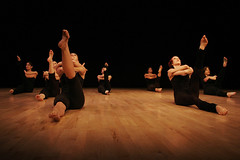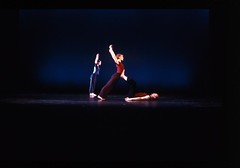Many children have a desire to dance. Some proclaim that when they grow up they want to become professional dancers. While many youth share this dream, only a few make it.
While it may be difficult to have a career in dance, it is definitely possible. Here are some helpful ways to make your dance dream into a reality:
- Become more knowledgeable about your craft
- Take a variety of dance classes
- Become a choreographer
- Consider a degree in Dance
- Build connections through networking
Become more knowledgeable about your craft:
Like in any profession, the more you know the better off you will be. The same rule applies for dance. It is a common misconception that dancers rely solely on their muscles. In reality, dancers rely much more on the brain. Learning choreography at a fast pace, reversing combinations, and timing movement to new music takes some serious brain power!
Aside from the physical aspects of dance, become knowledgeable about the entire field. If you are interested in ballet, perhaps research the history of ballet and see how your favorite arabesque came into existence. For Hip-Hop lovers, why not research the early Poppers or see where Krump dancing originated? Remember that a well informed dancer is a promising professional dancer who can contribute to the field in new and exciting ways.
Take a variety of dance classes:
It can be scary to break out of the comfortable confines of your local studio. But branching out has many benefits for an aspiring dance professional. By taking a wide variety of dance classes from different sources, you become a more versatile dancer. In today’s dance industry, versatility is extremely important. Sure you can specialize in a specific dance genre, but it is also important to be well-versed in a variety of styles. Most private studios offer the standard ballet, jazz and modern combination of courses. However, some offer tap, ethnic forms (like African and Latin styles), hip-hop (house, breaking, popping, locking), lyrical, contemporary and modern!
Take as many different dance classes as you can from different sources. If you belong to a studio, why not supplement your training with additional workshops and master classes? What doesn’t kill you makes you stronger, so if you can survive a grueling dance schedule than you are taking a step in the right direction.
Explore choreography:
Many leading industry professionals are required to contribute to the choreographic process. Even if your goal is to dance for a company, you should still be able to choreograph or create new movement on your own. Some choreographers ask dancers to improvise movement during a rehearsal or develop a phrase to go along with set choreography. Being able to create new movement is not rocket science—it takes creativity. Explore the way your body moves by improvising on your own. Try new things and do not be afraid to break outside of the barriers when creating new movement. After all, the objective is to create something new and exciting—so take a chance. You might surprise yourself and gain a new appreciation for choreographers. You may even become one!
Consider a degree in dance:
Dancers and artists fight an economic battle. To defeat debt, underfunded programs, and unemployment, it is important to come equipped for battle. One of your most reliable shields can be a degree in dance. There are now a host of higher education dance departments across the country. Some offer Bachelors of Arts (most liberal arts colleges and universities) while others offer a Bachelor in Fine Arts Degree (most conservatories). Some programs are large and require dance 24/7. Conservatories are dance training programs that prepare dancers to go out into the performance world ready for battle. Liberal Arts programs offer life skills such as writing, public speaking, problem solving and developing the inner artist. These programs also prepare graduates to become professional dancers and advocates for the arts. Conservatories and Liberal Arts programs have different approaches to dance training, but each has had countless success stories and many graduates currently working as professional dancers. A degree in dance sets you apart from the competition and exposes you to newer dance forms such as partnering, postmodern, and contact improvisation.
While some schools focus more on dance training, some specialize in dance scholarship and the academic component of the field. So explore your options and see if there is a dance program that suits your needs. Chances are you will find at least one program that can challenge your dancing and intellectual pursuits all at the same time.
Build connections through networking:
Some dancer landed that dream job because he had a cousin whose best friend’s fiancé knew the artistic director of a company. While this scenario is extreme, it is often how things play out. Somebody you know knows people in high places who can give your resumé some extra attention or land you the audition you always wanted. Do not be afraid to put yourself out there and network. Design a blog, web site or social networking page dedicated to your work in dance. A resumé, headshot (professional photos) and reel of performances and choreography are never a bad idea. With new technologies, promoting yourself as the dance professional you want to be is becoming easier and easier. Do not hesitate to talk to friends, family and co-workers about your goals, because you may be surprised at who can help you become a professional dancer.
Final Thoughts:
Hard work and dedication always win out in the end. If you believe in yourself, never give up, and work until you see your dream become a reality. Go out into the world and make your own creative opportunities. You have the power to create your own career.
Roger Lee is a professional dance writer, instructor, and studio consultant from Philadelphia, PA. His writing has been published nationally in Dance Magazine, Dance Magazine College Guide, Dance Studio Life Magazine, and The Dance Journal. Roger has taught hip-hop at The Rock School of Dance Education, Koresh School of Dance, Mid-Atlantic Ballet, Philadelphia Ballet School, and Drexel University Recreation Center. Roger also directs and choreographs Roger Lee Dance Company and provides dance studio marketing, communications, and publicity at www.rogerleedance.com





![Reblog this post [with Zemanta]](https://img.zemanta.com/reblog_e.png?x-id=5186a157-a4cf-4f30-8d3f-bfdec53bf41a)
